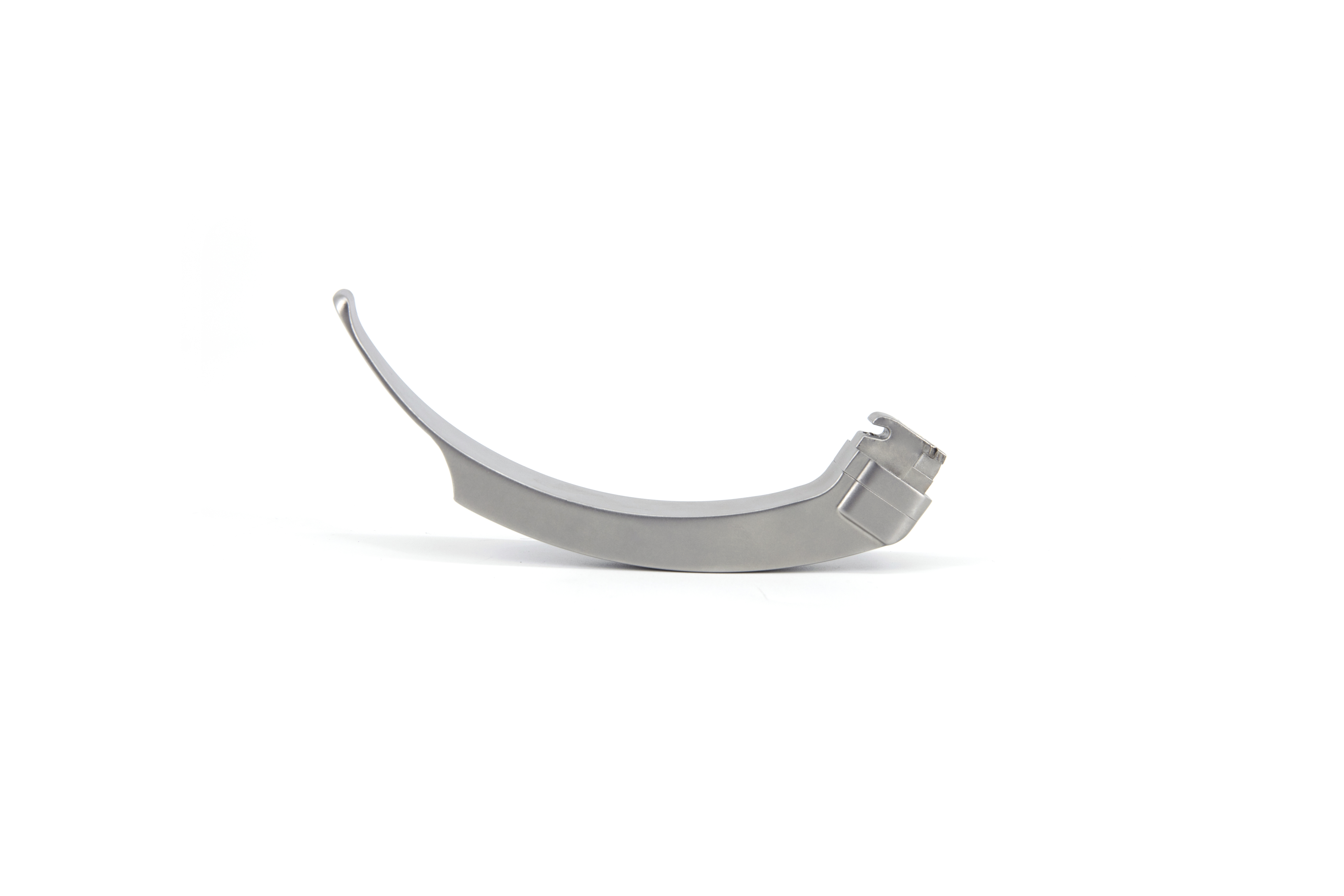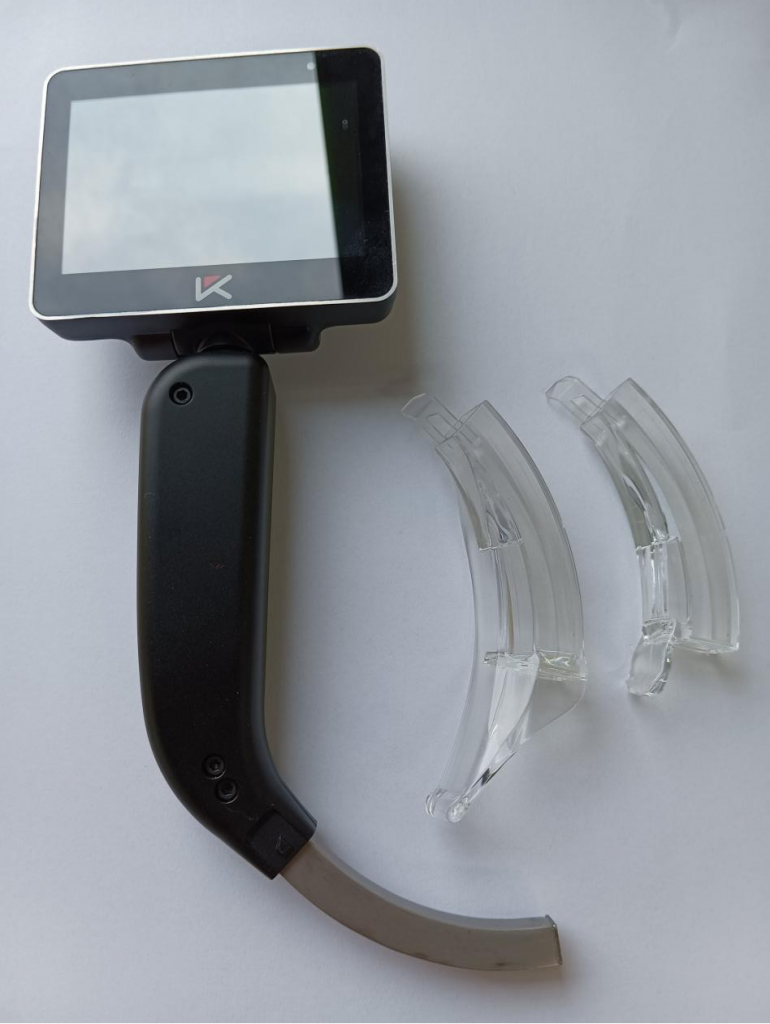Intubation Blade Types: Varieties and Uses
Dec 23, 2023
Intubation is a critical procedure used to manage a patient’s airway in emergency and routine situations. During intubation, healthcare professionals use a laryngoscope blade to lift the patient’s tongue and visualize the vocal cords. Choosing the right type of blade is crucial for successful intubation and airway management.
In this article, we will explore the different intubation blade types and their uses in airway management. From understanding the variations in blade sizes to discussing the best blades for difficult airways, we will delve into essential considerations for selecting the right blade for each clinical scenario. We will also look at emerging trends in intubation blade design and the importance of training and competency for healthcare professionals.
Key Takeaways:
- Intubation blade types are critical for successful airway management during intubation procedures
- Choosing the right blade depends on factors such as blade size, suitability for difficult airways, and advancements in design
- Video laryngoscope blades provide better visualization during intubation
- Reusable and disposable intubation blades have unique advantages and disadvantages
- Proper training and competency are essential for safe and effective use of intubation blades
Understanding Intubation Blades
Intubation blades are essential tools in airway management, allowing healthcare professionals to visualize the glottis and facilitate the insertion of an endotracheal tube. There are several types of intubation blades available, each with unique features that affect their suitability for different clinical scenarios. In this section, we will explore the variations in blade sizes and the role they play in successful intubation procedures.
Laryngoscope blades, used in direct laryngoscopy, are available in several different sizes. The most common sizes are Miller 0, 1, 2, and 3 and Macintosh 2, 3, and 4. The blade size is typically selected based on patient size, with larger blades used for adult patients and smaller blades for pediatric patients.
Intubation blade sizes can also vary based on the specific design of the blade. For example, some blades have a curved shape that facilitates better visualization of the vocal cords, while others have a straight shape that may be more suitable for difficult airway cases. The blade angle can also vary, with some blades having an acute angle to improve elevation of the epiglottis and others having a more obtuse angle that reduces the risk of dental trauma during intubation.
It is important for healthcare professionals to be familiar with the different types of intubation blades and their specific features to select the most appropriate blade for each clinical scenario. In the next section, we will discuss the intubation blade types that are best suited for managing difficult airways.
Best Intubation Blade for Difficult Airways
Intubating patients with difficult airways poses a challenge for healthcare providers. In these situations, selecting the best intubation blade is crucial to ensure successful airway management.
The Macintosh and Miller blades are commonly used for routine intubations due to their wide availability and familiarity among clinicians. However, for difficult airways, the Cormack-Lehane classification system recommends using the Miller blade with a shorter handle. This blade provides better control and direct visualization of the glottis, making it easier to intubate patients with difficult airways.
Another option is the Frova Intubating Introducer or FII. This specialized blade uses a flexible stylet to facilitate insertion of the endotracheal tube in difficult airway scenarios, minimizing the need for repeated attempts at intubation.
Overall, selecting the best intubation blade for difficult airways requires careful consideration of the patient’s unique airway anatomy and the operator’s experience and preferences. By choosing the appropriate blades for these challenging scenarios, healthcare providers can optimize patient outcomes and minimize the risk of complications.
Video Laryngoscope Blades
Video laryngoscope blades have become increasingly popular in recent years due to their ability to improve visualization during intubation procedures. These blades use a camera positioned at the end of the blade to capture a real-time view of the airway, allowing for better visualization of the vocal cords and trachea.
One of the main benefits of video laryngoscope blades is their ability to improve first-attempt success rates during intubation, particularly in difficult airway cases. They also reduce the amount of force required during intubation, minimizing patient discomfort and the risk of complications such as trauma to the airway.
However, there are a few limitations to using video laryngoscope blades. They require a power source, which can limit their use in certain clinical settings. They are also more expensive than traditional laryngoscope blades and may require additional training for proper use.
Overall, video laryngoscope blades can be a valuable addition to airway management techniques, particularly in challenging cases. However, healthcare providers should consider the potential benefits and limitations of these blades before incorporating them into their clinical practice.
Reusable vs. Disposable Intubation Blades
Intubation blades are critical instruments in airway management, ensuring safe and effective intubation procedures. When selecting intubation blades, healthcare providers must consider whether to use reusable or disposable options. Reusable intubation blades are typically made from stainless steel and can be cleaned and sterilized for reuse, making them a cost-effective option in the long run. On the other hand, disposable intubation blades are made for single-use, eliminating the need for cleaning and sterilization while reducing the risk of cross-contamination and infection.
Reusable intubation blades are durable and have a long lifespan, making them a popular choice in many healthcare facilities. They are easy to clean and sterilize, and can be used multiple times, reducing the expense of purchasing new blades frequently. However, reusable blades require proper maintenance and sterilization to ensure their safety and effectiveness. If not cleaned or sterilized properly, reusable blades can become contaminated and spread infections.
Disposable intubation blades, on the other hand, come in sealed packaging and are ready for immediate use. They are more expensive than reusable blades, but eliminate the need for maintenance and sterilization, saving time and costs associated with cleaning. Additionally, disposable blades reduce the risk of cross-contamination and infection, making them an ideal option for high-risk patients and those with compromised immune systems.
Both reusable and disposable intubation blades have their advantages and disadvantages, and healthcare providers must consider their specific needs and circumstances when making a decision. Infection control must always be a significant consideration in the choice of intubation blades used for airway management.
Factors to Consider When Choosing Intubation Blades
Choosing the right intubation blade type is critical in ensuring a successful airway management procedure. The decision should be based on an assessment of various factors, such as patient characteristics, clinical scenario, and operator preferences.
When selecting a blade type, the size of the blade should be evaluated based on the patient’s weight, body build, and age. For instance, children and patients with smaller airways may require a smaller blade size to avoid trauma during intubation.
The clinical scenario should also be considered when choosing an intubation blade type. Some cases, such as those involving difficult airways, may require special blade types, such as angulated or curved blades, to improve visualization and increase the likelihood of successful intubation.
Operator preferences should also be factored in when selecting an intubation blade type. Experienced operators may have a preferred blade type based on their previous success rates and familiarity with using certain blades.
Ultimately, the decision on the intubation blade type should be based on a combination of the above factors, careful evaluation of the patient’s airway, and clinician experience.
Standardization and Classification of Intubation Blades

The use of intubation blades is critical in airway management procedures across healthcare facilities. To ensure consistency in practices, standardization and classification systems have been developed to categorize intubation blades. These systems are designed to streamline processes and make it easier for healthcare providers to choose the appropriate blade for a given clinical scenario.
Currently, there are various classification systems in place for intubation blades. One of the most commonly used is the “Macintosh” system, which categorizes blades based on their curvature. Another system is the “Miller” classification, which involves dividing blades based on their shape and the degree of curvature.
These systems play a crucial role in ensuring that healthcare professionals use the correct intubation blade type for optimal patient outcomes. They also aid in the standardization of training and educational materials used to teach key concepts and practices in airway management.
It is essential to note, however, that there are limitations to these classification systems. Newer intubation blade types might not fit neatly into existing categories, making it challenging to choose the appropriate blade for a specific scenario. To overcome this issue, some experts suggest that systems should be updated regularly to account for advancements in technology and changes in clinical preferences.
In summary, understanding the standardization and classification of intubation blades is crucial for health care providers involved in airway management. These systems ensure that consistent practices are in place, which aids in optimal patient outcomes. However, it is essential to stay updated with emerging trends and advancements in the field to accommodate the development of new intubation blade types.
Emerging Trends in Intubation Blade Design
The world of intubation blades is ever-changing with the advancements in technology and better understanding of airway management. Several trends are emerging and have the potential to make a significant impact on intubation procedures and patient outcomes.
3D Printed Blades
3D printing has revolutionized the manufacturing sector, and healthcare is no exception. The ability to print intubation blades gives clinicians the flexibility to customize blade designs to suit patient needs. This is particularly beneficial in cases where traditional blades are unsuitable or not readily available. The patient’s anatomy can also be incorporated into the design to optimize intubation success rates and minimize complications.
Optical and Lighted Blades
Optical and lighted blades improve intubation visualization and, subsequently, the success rate. These blades incorporate extra instruments, such as cameras and lights, which illuminate the airway and anatomical structures, making it easier to navigate during intubation. These blades are especially beneficial in difficult airway cases where traditional methods have failed.
Oxygenation and Ventilation Blades
Oxygenation and ventilation blades have an extra channel to improve oxygenation and ventilation. These blades incorporate a separate oxygen or ventilation flow rate that provides oxygen or ventilation to the patient during intubation. The extra channel improves oxygenation and ventilation, making it easier to manage patients with respiratory distress or ARDS (Acute Respiratory Distress Syndrome).
These emerging trends in intubation blade design are exciting developments and have the potential to enhance intubation procedures’ safety and success rates. As technology continues to evolve, clinicians can expect more innovative designs and features in the intubation blade realm.
Training and Competency in Intubation Blade Use
Proper training and ongoing education are vital for healthcare professionals who use intubation blades. To ensure safe and effective use of different types of intubation blades, professionals must meet specific training requirements and skills development standards.
Healthcare institutions must provide training programs covering topics such as identifying different blade types, evaluating patient needs, and selecting the appropriate blade for each situation. These programs must also include extensive hands-on training, leading to the development of technical proficiency and a good understanding of the various airway management techniques.
Ongoing education and evaluation are equally critical to ensure that healthcare professionals maintain their competencies. Periodic reassessment of clinical skills and the introduction of new technologies and techniques are essential components of ongoing competency development.
It is important to recognize that there is no one-size-fits-all approach to intubation training and competency development. Rather, training programs and ongoing education should be tailored to meet the needs of each healthcare professional and the unique requirements of their institutions. By prioritizing ongoing education and competency development, healthcare institutions can help ensure that intubation blade use remains safe, effective, and optimized for patient care.
Conclusion
Intubation blade types are a critical component of airway management for healthcare providers. By understanding the different varieties of intubation blades and their features, clinicians can optimize patient care and outcomes.
Factors such as blade size, suitability for difficult airways, and advancements in design must be considered when selecting intubation blades for a clinical scenario. In addition, training and competency in intubation blade use are essential to ensure safe and effective patient care.
Standardization and classification of intubation blades also play a crucial role in ensuring consistent practices across healthcare facilities. Moreover, emerging trends in intubation blade design continue to evolve with advancements in technology and improved understanding of airway management.
In conclusion, healthcare providers involved in airway management must prioritize understanding the different intubation blade types, their suitability for various clinical scenarios, and the latest trends in design. By doing so, they can make informed decisions to optimize patient care and outcomes.
Categories
Latest Articles

Disposable Nephroscopes: Redefining Safety & Efficiency in Urology
Introduction The shift towards minimally invasive urological surgery has found a pivotal ally: the disposable nephroscope. As traditional reusable scopes grapple with persistent biofilm contamination risks and soaring sterilization costs, the global medical community is rapidly adopting single-use solutions. This article analyzes the clinical value, technological evolution, and dynamic innovation landscape driving this transformative shift. ... Read more

Disposable Video Laryngoscope Blades: The Ultimate Solution for Preventing Cross-Contamination
In the operating room, as the cold light of a video laryngoscope illuminates a patient’s airway, an age-old medical challenge is being redefined: How can life-saving instruments avoid becoming vectors of infection? Jiangsu MoleMedical drives an innovative safety revolution—replacing reusable devices with single-use, sterile laryngoscope blades that create a pure barrier for critical airways. Traditional video ... Read more
-2.jpg)
FDA & CE Approved Video Laryngoscope: What Makes It Stand Out?
Introduction In high-pressure emergencies and precision-driven operating rooms, video laryngoscopy is revolutionizing airway management. Mole Medical’s FDA and CE-certified technology replaces tactile-dependent “blind intubation” with real-time visual navigation – enhancing safety, accuracy, and clinical outcomes worldwide. Why Certification Matters Mole Medical’s dual certifications validate its global compliance and performance: FDA Clearance: Rigorous validation of safety/efficacy ... Read more

Mole Medical Showcases Advanced Endoscopy Solutions at CMEF Autumn 2025, Driving Global Partnerships
Guangzhou, China – September 26-29, 2025 – The 92nd China International Medical Equipment Fair (CMEF Autumn) concluded successfully on September 29th at the Canton Fair Complex in Guangzhou. Mole Medical Technology Co., Ltd. (Mole Medical) made a significant impact at the event, drawing global medical professionals and partners to its booth (Hall 2.1, Stand Q24) ... Read more

How to Use Disposable Ureteroscopes Safely and Efficiently
In the field of urology, the application of disposable electronic ureteral-kidney pelvis endoscopy catheters is leading the technological innovation in minimally invasive surgeries. According to the 2024 multi-center research data from China’s urology department, among the over 5,000 surgeries included, the patient group using disposable catheters performed significantly better in key indicators such as operation ... Read more



